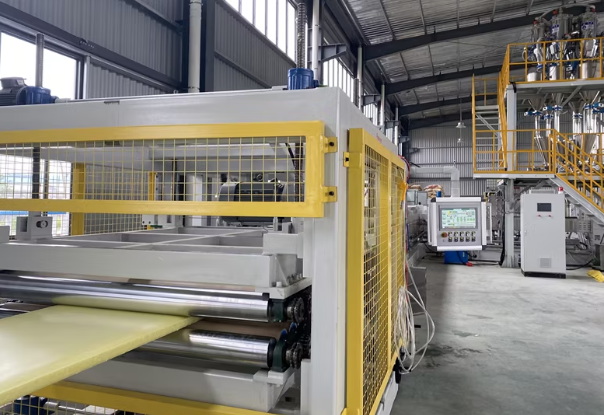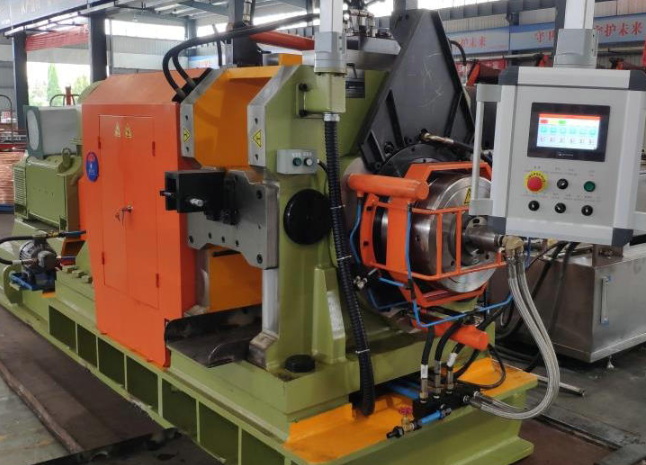Content Menu
● Introduction to Plastic Extrusion Machinery Factories
>> Components of Plastic Extrusion Machinery
● Process of Plastic Extrusion
● Innovations in Plastic Extrusion Machinery Factories
● Downstream Equipment in Plastic Extrusion Machinery Factories
● Challenges Faced by Plastic Extrusion Machinery Factories
● Future Trends in Plastic Extrusion Technology
● Case Studies of Successful Plastic Extrusion Factories
● Environmental Impact of Plastic Extrusion Processes
● Top Manufacturers of Plastic Extrusion Machinery
● Conclusion
● Frequently Asked Questions
>> 1. What is the primary function of a plastic extrusion machine?
>> 2. What types of products can be made using plastic extrusion machinery?
>> 3. How do plastic extrusion machinery factories ensure product quality?
>> 4. What innovations are currently impacting plastic extrusion machinery factories?
>> 5. What are some of the top manufacturers of plastic extrusion machinery?
Plastic extrusion machinery factories play a crucial role in the production of a wide range of plastic products, from pipes and profiles to films and sheets. These factories are equipped with advanced technology and machinery designed to meet the demands of various industries, including construction, automotive, packaging, and medical devices. In this article, we will explore the key features of plastic extrusion machinery factories, including their components, processes, and innovations.

Introduction to Plastic Extrusion Machinery Factories
Plastic extrusion machinery factories are specialized facilities that house a variety of equipment necessary for transforming raw plastic materials into continuous profiles. The process involves melting plastic pellets or granules and forcing them through a die, which shapes the material into the desired form. This versatility allows for the production of complex shapes with uniform consistency, making plastic extrusion a vital tool across multiple sectors.
Components of Plastic Extrusion Machinery
A typical plastic extrusion machine consists of several integral components:
- Hopper: This is where raw plastic material, usually in pellet form, is loaded. The hopper feeds the material into the barrel of the extruder.
- Barrel: The barrel houses the extruder screw and is equipped with heaters to melt the plastic. It is designed to withstand high pressure and temperatures.
- Extruder Screw: This rotating screw carries the plastic pellets from the hopper to the other end of the barrel. Its rotation generates heat through friction, melting the plastic.
- Heaters: These are located along the barrel and aid the screw in melting the plastic. They also help maintain the necessary temperature for extrusion.
- Die: The die gives shape to the molten plastic. It is a customized part of the machine, specifically designed according to the profile of the product to be manufactured.
- Cooling System: After being shaped by the die, the plastic needs to be cooled and solidified. This system may include fans, water baths, or cooling rollers.
- Cutter: This component cuts the newly formed plastic into the required lengths. Depending on the product, the edge may be a simple guillotine or a more complex rotary cutter.
Process of Plastic Extrusion
The plastic extrusion process involves several key steps:
1. Material Preparation: Raw plastic material is prepared and fed into the hopper.
2. Extrusion: The material is melted and pushed through the die.
3. Shaping and Cooling: The molten plastic is shaped by the die and cooled to solidify its form.
4. Cutting: The extruded product is cut into the desired lengths.
5. Packaging: The final products are packaged for distribution.
Innovations in Plastic Extrusion Machinery Factories
Plastic extrusion machinery factories are continuously evolving with technological advancements and innovations. Some of the key innovations include:
- Customizable Features: Machines can be customized based on specific operational needs, offering flexibility and adaptability in production. This includes customizable screw designs, die designs, and temperature control systems.
- Sustainability: There is a growing focus on sustainability, with machines designed to process recycled plastics and bioplastics efficiently.
- Automation: Advanced control systems allow for remote operation, real-time monitoring, and precise control over the extrusion process.
Recent innovations also include the use of AI for process optimization, energy-efficient machines, and the integration of IoT for real-time monitoring. These advancements not only improve efficiency but also reduce energy consumption and enhance product quality.

Downstream Equipment in Plastic Extrusion Machinery Factories
Downstream equipment is used after the extrusion process to add finishing touches to the final product. This includes:
- Cooling Tanks: These devices cool down the extruded plastic using chilled water or air.
- Pullers: Pullers maintain the speed and tension of the extrusion to ensure uniform shape and size.
- Cutters or Saws: These are used to slice the extruded product into the desired lengths.
- Coilers or Winders: These are used to wind extruded products like tubes or profiles onto spools or reels for ease of handling and transportation.
Challenges Faced by Plastic Extrusion Machinery Factories
Despite the advancements, plastic extrusion machinery factories face several challenges:
- Material Waste: Reducing material waste is crucial as it not only saves costs but also contributes to sustainability.
- Energy Consumption: High energy consumption is a significant challenge, as it impacts both operational costs and environmental impact.
- Skilled Labor: The need for skilled labor to operate and maintain complex machinery is a persistent issue.
Future Trends in Plastic Extrusion Technology
The future of plastic extrusion technology is likely to focus on more sustainable practices. This includes the use of biodegradable materials and closed-loop recycling systems, which can significantly reduce the environmental footprint of plastic production. Additionally, advancements in automation and AI will continue to enhance efficiency and product quality.
Case Studies of Successful Plastic Extrusion Factories
Several companies have successfully implemented automation in their plastic extrusion processes, achieving significant cost savings and efficiency improvements. These case studies highlight the potential for innovation and modernization in the industry.
Environmental Impact of Plastic Extrusion Processes
The plastic extrusion process can contribute to pollution and waste, but advancements are being made to reduce its environmental footprint. This includes the development of more energy-efficient machines and the use of recycled materials. As sustainability becomes a priority, plastic extrusion machinery factories are adapting to meet these demands.
Top Manufacturers of Plastic Extrusion Machinery
Some of the top manufacturers of plastic extrusion machinery include:
- YeJing
- Leistritz
- Reifenhäuser Group
- Bausano & Figli S.p.A.
- Davis-Standard
- Kabra Extrusiontechnik Ltd.
- Luigi Bandera
- Sumitomo Heavy Industries, Ltd.
- Coperion
- Milacron
These manufacturers offer a range of innovative solutions and technologies to enhance the efficiency and quality of plastic extrusion processes.
Conclusion
Plastic extrusion machinery factories are pivotal in the production of a wide array of plastic products. With their advanced components, processes, and innovations, these factories enable industries to produce high-quality products efficiently. As technology continues to evolve, plastic extrusion machinery factories will remain at the forefront of manufacturing, adapting to sustainability and automation trends.

Frequently Asked Questions
1. What is the primary function of a plastic extrusion machine?
Plastic extrusion machines are primarily used to transform raw plastic materials into continuous profiles by melting the plastic and forcing it through a die, which shapes the material into the desired form.
2. What types of products can be made using plastic extrusion machinery?
Plastic extrusion machinery can produce a variety of products, including pipes, profiles, sheets, films, and tubing, which are used in industries such as construction, automotive, packaging, and medical devices.
3. How do plastic extrusion machinery factories ensure product quality?
Quality control in plastic extrusion involves inspecting raw materials, monitoring temperature and speed during extrusion, and checking the final product's dimensions and appearance against specified standards.
4. What innovations are currently impacting plastic extrusion machinery factories?
Current innovations include customizable machine features, increased focus on sustainability through the use of recycled plastics, and advanced automation systems for precise control over the extrusion process.
5. What are some of the top manufacturers of plastic extrusion machinery?
Top manufacturers include Jieya, Leistritz, Reifenhäuser Group, Bausano & Figli S.p.A., Davis-Standard, Kabra Extrusiontechnik Ltd., Luigi Bandera, Sumitomo Heavy Industries, Ltd., Coperion, and Milacron.






















